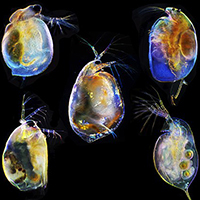Experiments on invertebrate predation on cladocerans and its relationships with lake data

Submitted: 16 September 2020
Accepted: 14 April 2021
Published: 7 October 2021
Accepted: 14 April 2021
Abstract Views: 2546
PDF: 370
HTML: 119
HTML: 119
Publisher's note
All claims expressed in this article are solely those of the authors and do not necessarily represent those of their affiliated organizations, or those of the publisher, the editors and the reviewers. Any product that may be evaluated in this article or claim that may be made by its manufacturer is not guaranteed or endorsed by the publisher.
All claims expressed in this article are solely those of the authors and do not necessarily represent those of their affiliated organizations, or those of the publisher, the editors and the reviewers. Any product that may be evaluated in this article or claim that may be made by its manufacturer is not guaranteed or endorsed by the publisher.
Similar Articles
- Muhammed Shikhani, Chenxi Mi, Artur Gevorgyan, Gor Gevorgyan, Amalya Misakyan, Levon Azizyan, Klemens Barfus, Martin Schulze, Tom Shatwell, Karsten Rinke, Simulating thermal dynamics of the largest lake in the Caucasus region: The mountain Lake Sevan , Journal of Limnology: Vol. 81 No. s1 (2022): Lake Sevan. Past, present, and future state of a unique alpine lake
- Armine Hayrapetyan, Gor Gevorgyan , Martin Schultze, Muhammed Shikhani, Termine Khachikyan, Aleksandr Krylov, Karsten Rinke, Contemporary community composition, spatial distribution patterns, and biodiversity characteristics of zooplankton in large alpine Lake Sevan, Armenia , Journal of Limnology: Vol. 81 No. s1 (2022): Lake Sevan. Past, present, and future state of a unique alpine lake
- Xiangyu Mu, James Brower, Donald I. Siegel, Anthony J. Fiorentino II, Shuqing An, Ying Cai, Delin Xu, Hao Jiang, Using integrated multivariate statistics to assess the hydrochemistry of surface water quality, Lake Taihu basin, China , Journal of Limnology: Vol. 74 No. 2 (2015)
- Luigi Hinegk, Luca Adami, Sebastiano Piccolroaz, Marina Amadori, Marcello Moretti, Marco Tubino, Marco Toffolon, Multidecadal analysis of Lake Garda water balance , Journal of Limnology: Vol. 82 (2023)
- Martha Patricia Celis-Salgado, Wendel (Bill) Keller, Norman D. Yan, Calcium and sodium as regulators of the recovery of four Daphnia species along a gradient of metal and base cations in metal contaminated lakes in Sudbury, Ontario, Canada , Journal of Limnology: Vol. 75 No. s2 (2016): Lake Orta: a new lease on life
- Franco Tassi, Dmitri Rouwet, An overview of the structure, hazards, and methods of investigation of Nyos-type lakes from the geochemical perspective , Journal of Limnology: Vol. 73 No. 1 (2014)
- Zacarias Fresno Lopez, Tommaso Cancellario, Diego Fontaneto, Lyudmila Kamburska, Karimullah Karimullah, Robert L. Wallace, Elizabeth J. Walsh, Radoslav Smolak, A georeferenced dataset for occurrence records of the phylum Rotifera in Africa , Journal of Limnology: Vol. 82 No. s1 (2023): Georeferenced freshwater biodiversity data
- Claudia Dresti, Andrea Fenocchi, Diego Copetti, Modelling physical and ecological processes in medium-to-large deep European perialpine lakes: a review , Journal of Limnology: Vol. 80 No. 3 (2021): Celebratory Issue - 80th Anniversary of the Journal of Limnology
- Maxine A.D. Mowe, Simon M. Mitrovic, Richard P. Lim, Ambrose Furey, Darren C.J. Yeo, Tropical cyanobacterial blooms: a review of prevalence, problem taxa, toxins and influencing environmental factors , Journal of Limnology: Vol. 74 No. 2 (2015)
- Danyang Danyang, Chenhao Li, Lijie Pu, Hugejiletu Hugejiletu, Xiaojing Suo, Ming Zhu, Yalu Zhang, Xiaoqing Wang, Gaili He, Dejing Chen, Changes in and driving factors of the lake area of Huri Chagannao’er Lake in Inner Mongolia , Journal of Limnology: Vol. 81 (2022)
You may also start an advanced similarity search for this article.

 https://doi.org/10.4081/jlimnol.2021.1987
https://doi.org/10.4081/jlimnol.2021.1987





